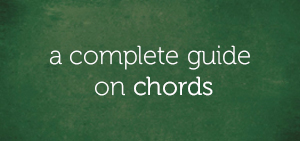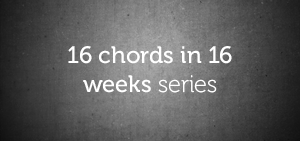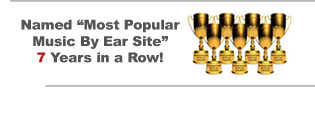In this lesson, we’ll be learning how an augmented triad can be resolved.
A lot of attention is given to major and minor triads by most beginners that it gets to a point where they begin to ask “Hey! How are augmented chords resolved?” and if you’re one of those asking this question, then this lesson is definitely for you.
A Short Note On The Augmented Triad
A triad is a collection of three or more related notes (agreeable or not) which may be played or heard together. The augmented triad can be associated with the major triad (that I believe that you’re already familiar with). For example, the C major triad:
…can be used to form the C augmented triad by raising its fifth tone (which is G):
…by a half-step (to G#):
Check out the C augmented triad:
Therefore, raising the fifth tone of any augmented triad by a half-step produces an augmented triad.
“Here Are All The Augmented Triads On The Keyboard…”
C augmented triad:
Db augmented triad:
D augmented triad:
Eb augmented triad:
E augmented triad:
F augmented triad:
Gb augmented triad:
G augmented triad:
Ab augmented triad:
A augmented triad:
Bb augmented triad:
Cb augmented triad:
Ask Dr. Pokey: How Can An Augmented Triad Be Resolved?
An augmented triad can be applied as a passing chord in chord progressions and this is because of the inherent instability derived from the “augmented 5th” interval they are made up of.
In the C augmented triad:
…the G# tone:
…which is an augmented fifth above the root (which is C):
…sounds dissonant when played with the root (as C-G#):
The dissonance of the augmented fifth interval influences the overall sound of the augmented triad, and when played, every tone of the augmented triad is active. Let’s quickly talk about the activity of the tones of the augmented triad.
The Activity Of The Tones Of The Augmented Triad
Every tone of the augmented triad tends to move up by a half-step when played and this is because the tones of the augmented triad are unstable. The movement of the tones of an unstable chord is known as resolution.
Every tone in the augmented triad has the ability to resolve to a major or minor chord that is a half-step above it.
The three tones of the C augmented triad (C, E, and G#):
…are all active and have the tendency to resolve to a major or minor chord that is a whole step or half-step above it.
To resolve the C augmented triad:
…one needs to consider the several options available:
C to Db (from the root [C])
E to F (from the third [E])
G# to A (from the fifth [G#])
The C augmented triad resolves to Db, F, and A. Each of the tones the C augmented triad can resolve to can either be a major or minor triad. So, the C augmented triad resolves to any of the following Db, F, and A triads:
Db major triad
Db minor triad
F major triad
F minor triad
A major triad
A minor triad
“Let’s Check The Possible Resolutions Of The C Augmented Triad…”
C augmented triad:
…to Db major triad:
C augmented triad:
…to Db minor triad:
C augmented triad:
…to F major triad:
C augmented triad:
…to F minor triad:
C augmented triad:
…to A major triad:
C augmented triad:
…to A minor triad:
Final Words
I’m doubly sure that the concepts covered in this blog has shown you how the augmented triad can be resolved in chord progressions. In a subsequent post, we’ll cover how the augmented triad can be applied in chord progressions.
See you then!
Chuku Onyemachi
Latest posts by Chuku Onyemachi (see all)
- The Formation Of Diminished Seventh Chords Used To Be Challenging Until I Did This
- How To Form Seventh Chords In Two Shakes Of A Dog’s Tail Using Third Intervals And The Circle Of Fifths Chart
- I Played The 13sus4 Chord And This Happened…
- How To Build Seventh Chords Like An Architect Using “Foundation And Structure” Concept
- This 4-Week Plan Will Help You Master All The Major Scales







Comments on this entry are closed.